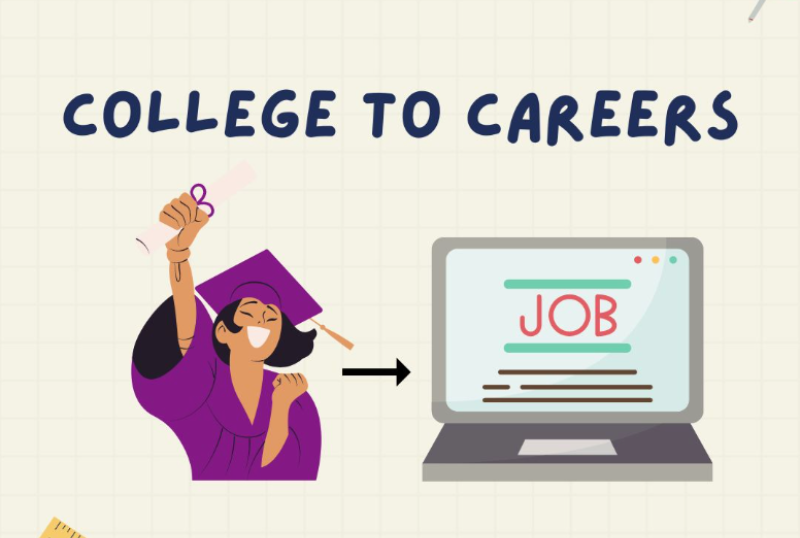Research
Surveys
We created a survey using Google Forms to determine how ready college students feel for the workforce post-grad. We were able to identify our target audience and demographic for our project.
View Survey ResultsInterviews
We conducted two semi-structured interviews with University of Washington students. Our team designed a standard interview protocol with three questions that gauged the comfortability of the participants' life in the workforce post-grad, as well as what resources the student used at their university. We were able to identify key issues that we needed to address, which narrowed the scope of our project.
Personas
We created two user personas that illustrated the common behaviours and worries that college students had about life post-grad. These were based off of the findings from our surveys and user interviews. Through our research We discovered different challenges that upper-classmen face, which helped us identify specific coursework for our Canvas course. The persona I created is displayed to the right.
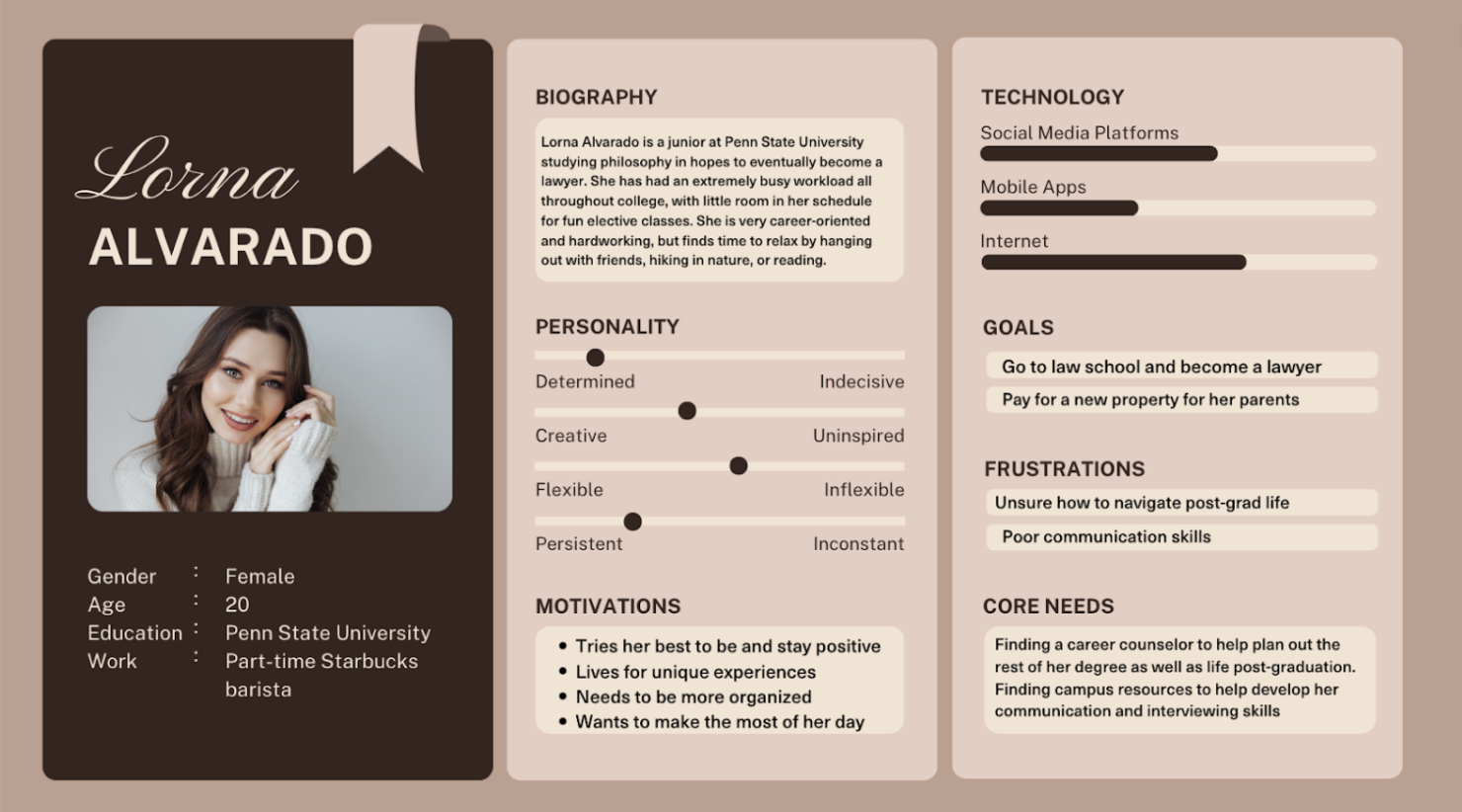
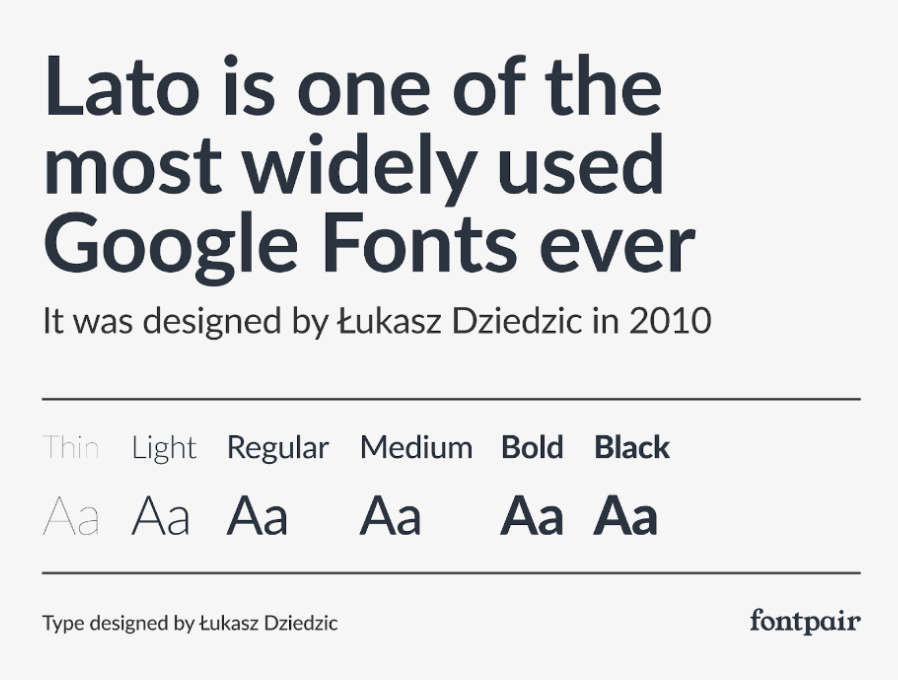

Design
Product Features
- In-person lectures
- In-person discussions
- Relevant assignments
- Credit / no credit grading system
- Diversity and versatility
Primary Features
Feature 1: In-person lectures are integral for relaying
information to college students. We decided to make the
lectures in-person rather than having them asynchronous so
that students actively learn the skills they need while having
the opportunity to get live feedback or ask questions in real
time. In addition, in-person lectures allow the college to keep
track of attendance to better analyze how well the course helps in
career readiness.
Feature 2: In-class discussions facilitate an open, curious environment
where like-minded peers can ask questions or engage with each other as
they go through the course. They also encourage active participation and
collaboration about what is being taught so that the information they
learn in class actually sticks.
Secondary Features
Relevant Assignments: Though we did not want these educational classes
to be a burden on students in terms of workload, relevant assignments
pertaining to the lectures and discussions are important so students
can get the practice they need to succeed in the real world. Learning
about skills is one thing, but practicing and engaging with the material
is ultimately how career-oriented skills are developed. These
assignments would look like presentations in a public speaking class,
excel spreadsheets in a computer skills class, or a mock interview in a
class that teaches interviewing skills for jobs.
Credit/No Credit Grading System: Similar to a FIG
(first-year interest group) that is already implemented at the University
of Washington, these classes would follow a credit/no credit grading
system to ensure they do not add to students’ stress with their current
workloads (UW First Year Programs 2023). In order to pass the class,
students must complete assignments on time and be actively engaged in
class lectures and discussions. The focus of these classes is on skill
development, not grades or tests.
Diversity and Versatility: Career-readiness classes will come in a variety
of forms, times, and sizes. Some will have bigger classes that focus on
vital computer skills, while others will be smaller, more intimate
classes that focus on professional relationship skills such as
interviewing or public speaking. In addition, the classes will be held
at different times and days of the week to accommodate students'
diverse schedules. Whether a student is looking for a small,
collaborative environment or a quick refresh on tools like Figma or
Excel, there will be a class available that fits their needs and schedule.
Annotated Wireframing
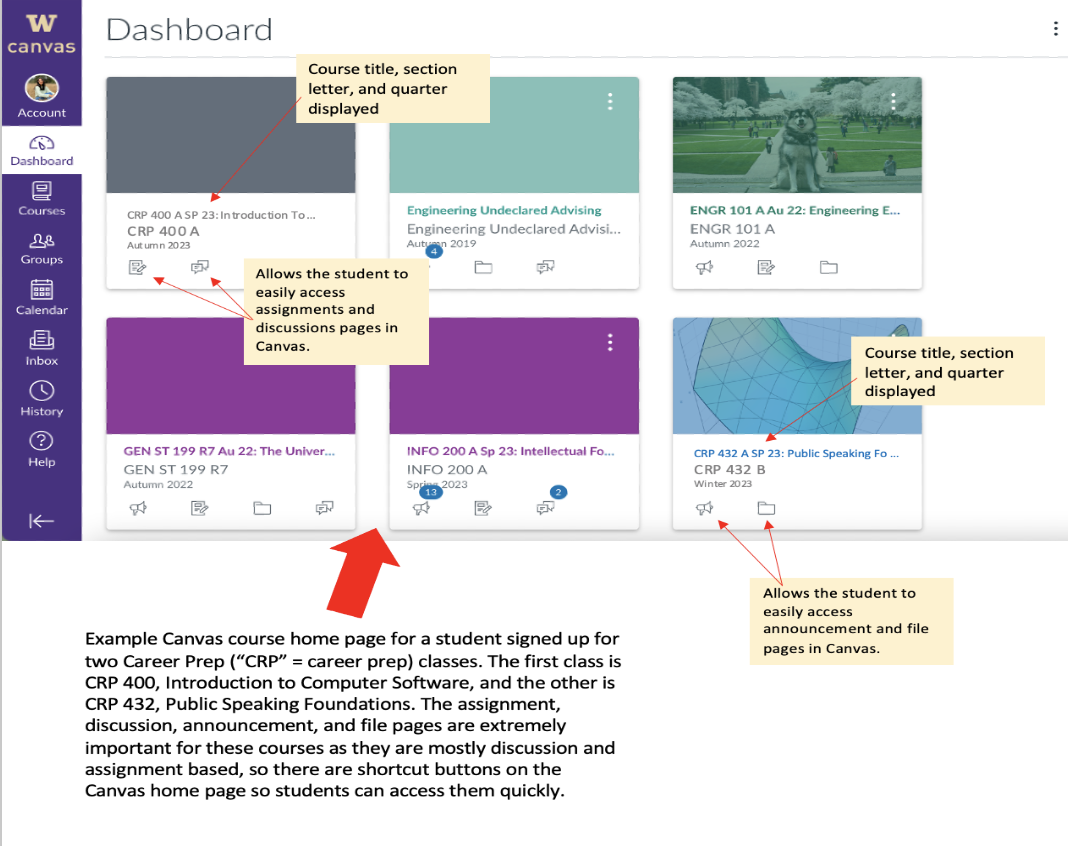
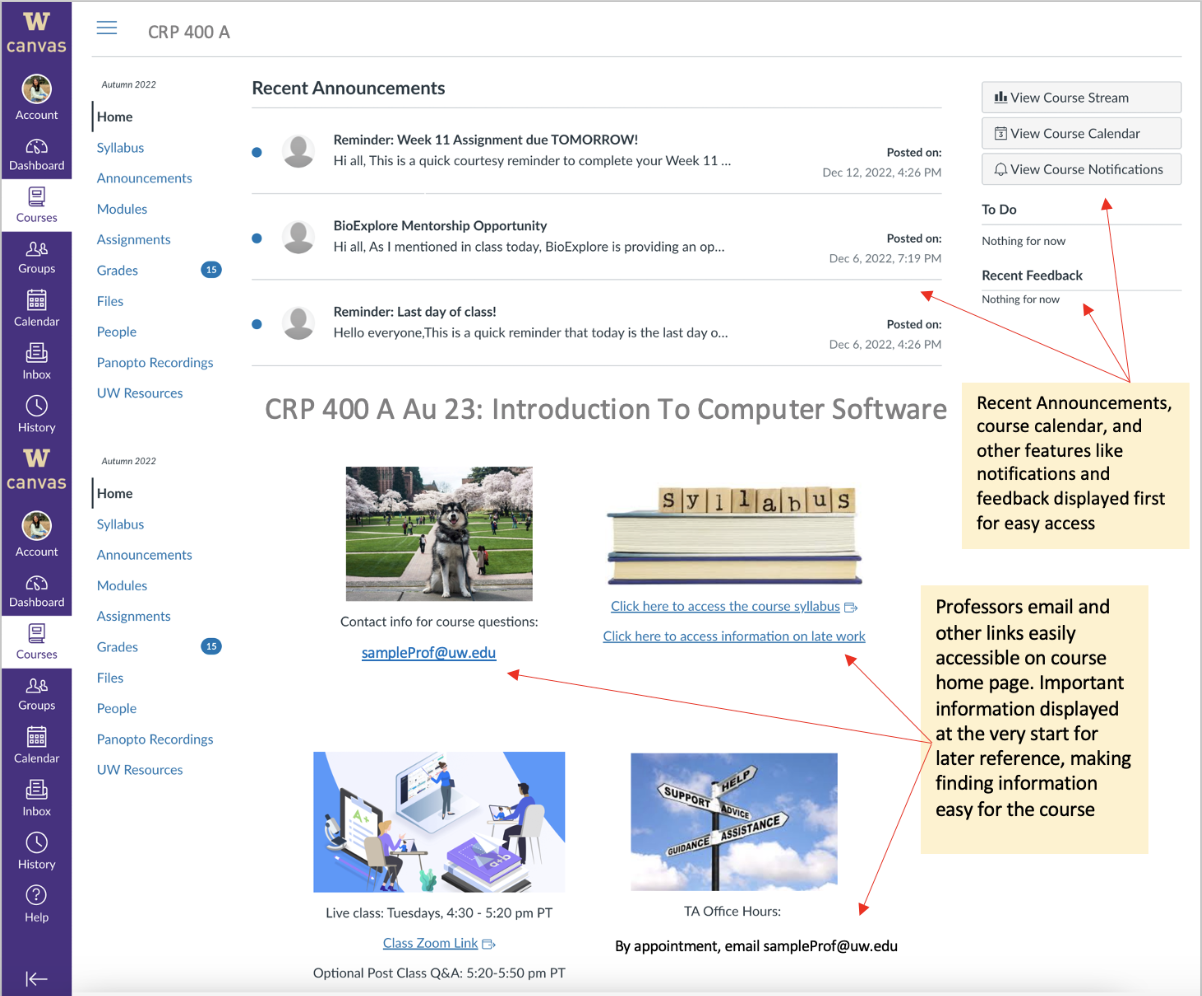
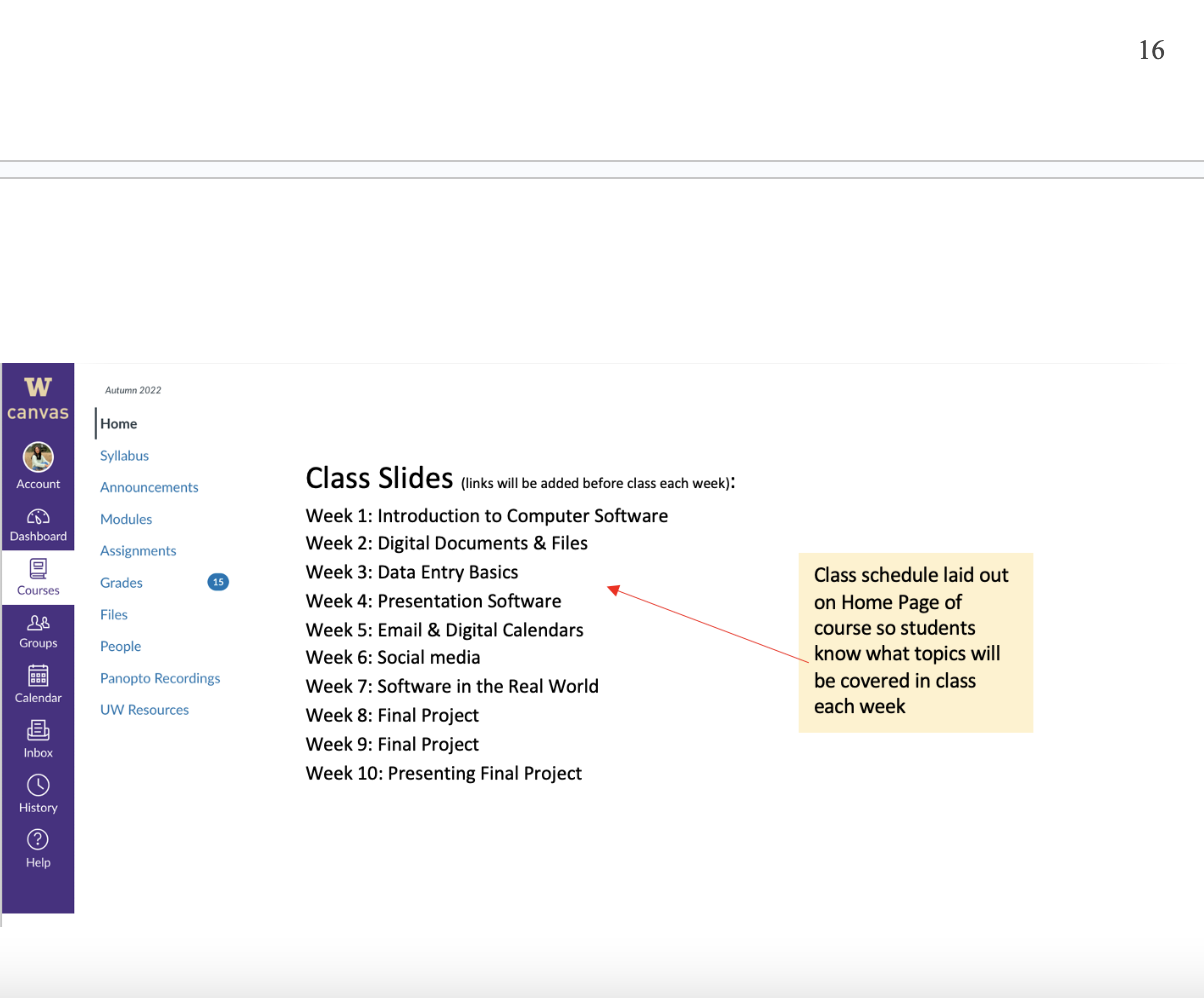
We created wireframes for our entire system with annotations that highlight the main features on each screen. This helped us solidify our course's main features. These wireframes became the structure for our low-fidelity prototype in the next phase.

